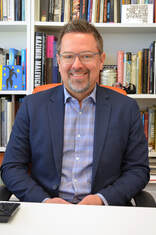One of my favorite episodes of cultural diplomacy occurred in 1979 when Vice Premier Deng Xiaoping of the People’s Republic of China visited the United States to see President Jimmy Carter. This first state visit by a Chinese leader followed the normalization of formal diplomatic relations between the U.S. and China.
In advance of this crucial visit by a fellow head of state, President Carter directed the Kennedy Center to create a one-hour show for this state visit, celebrating a “Performance of American Arts.” George Stevens Jr., son of George Stevens who made the iconic films Giant and A Place in the Sun, was tapped for the job as he was already responsible for the Kennedy Center Honors. He immediately set to work with members of the United States Information Agency to make this event happen.
The program concept originally included the Harlem Globetrotters and architect I.M. Pei giving a public address. Ultimately, the show featured Broadway performers, pianist Rudolf Serkin, folk singer John Denver, and dancers from the Joffrey Ballet, who performed an Agnes DeMille dance based on composer Aaron Copland’s Rodeo.
The program offered a magnanimous welcome to the Chinese dignitaries in both Chinese and English, signed by President Jimmy Carter and First Lady Rosalyn Carter:
The performing arts in America are far too rich and varied to be present in a single evening. But we hope that tonight’s performance will at least suggest some of the richness and variety—and that in doing so, it will contribute to friendship and understanding between the peoples of the United States and China.
It was remembered among the organizing team that in 1976 Deng Xiaoping was taunted by Chairman Mao’s cultural revolutionaries while being paraded through Tiananmen Square. And while Deng Xiaoping protested, he sang a song.
It was then that Jane Chermayeff, a member of the organizing committee and the wife of famed graphic designer Ivan Chermayeff, had a brainstorm, and it was this: Why not get American children to come to the Kennedy Center and sing in Chinese this protest song for Vice Premier Xiaoping?
So, in the month leading up to the performance, the team found kids from local choirs and a schoolteacher who spoke Chinese, and they taught them the song, drilling them on the verses daily, in Chinese.
The evening of the show arrives and the Chinese and American leaders are sitting in their box. In the last five minutes of the show, after the Broadway performers, after the classical and folk musical numbers, one hundred American children, ages eight to 10, walk onto the stage. Not a word is said and no one knows this is about to happen. The kids start singing this anti-Mao song. Deng Xiaoping stands up, this leader of 700 million people, 500 million of whom would be watching the show live via PBS broadcast in China. Xiaoping walks up on the stage, embraces the kids, with tears streaming down his face. It’s a sensation and nobody knows what this is except for him.
This was a brilliant idea, a shining example of how the arts can bring together once estranged people. After, George Stevens Jr. met with President Carter in the Oval Office, who told him: “You made it. That was a night I’ll never forget.”
And what does this have to do with museums? Everything!
As museums become less ivory tower destinations for the privileged and evolve into welcoming institutions that seek engagement with the general public through programs tailored specifically for special audiences, museum shall become a form of cultural diplomacy themselves.
Museums are meant for congregating, where people should interact with one another in a safe, creative space and find new meaning together. This is what Edward R. Murrow, former director of the United States Information Agency, meant when he talked about “the last three feet” of cultural diplomacy: the removal of barriers imagined and real so that people could connect with each other.
The Albany Museum of Art is working toward this vision to become, in the words of museum leader Elaine Heumann Gurian, “a clubhouse for all who need it.”
-

Hi, I'm Andrew J. "Andy" Wulf, Ph.D.
Andrew J. “Andy” Wulf is executive director of the Albany Museum of Art. A native of Los Angeles, he has a Ph.D. from the School of Museum Studies, University of Leicester, United Kingdom, and an M.A. in Art History and Museum Studies from the University of Southern California. Before coming to the AMA in October 2019, he was executive director of the New Mexico History Museum and the Palace of the Governors in Santa Fe, N.M. (2015-19) and supervisory museum curator for the Ronald Reagan Presidential Library and Museum (2010-15). Contact him at [email protected].
